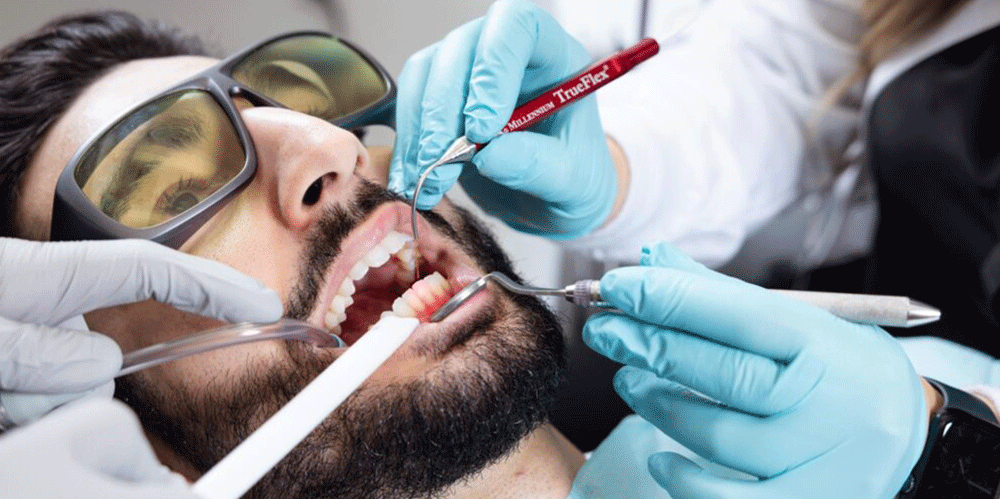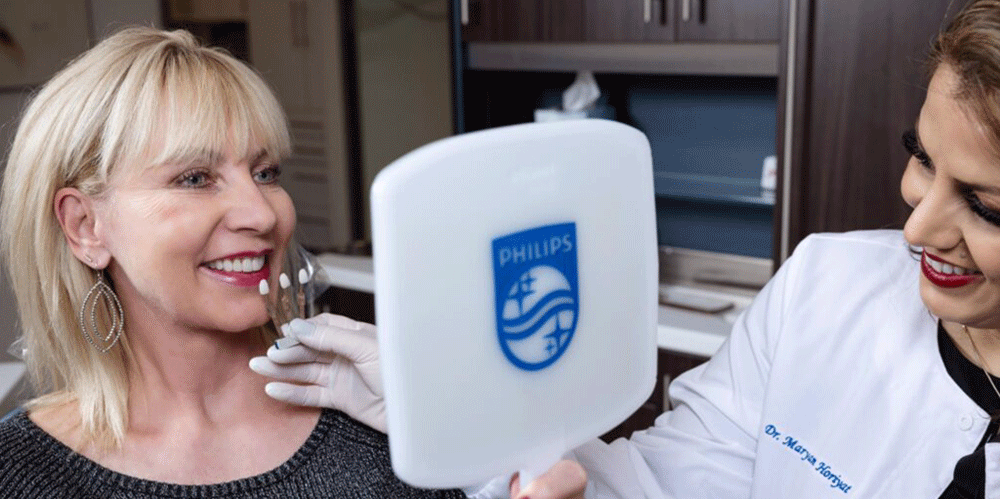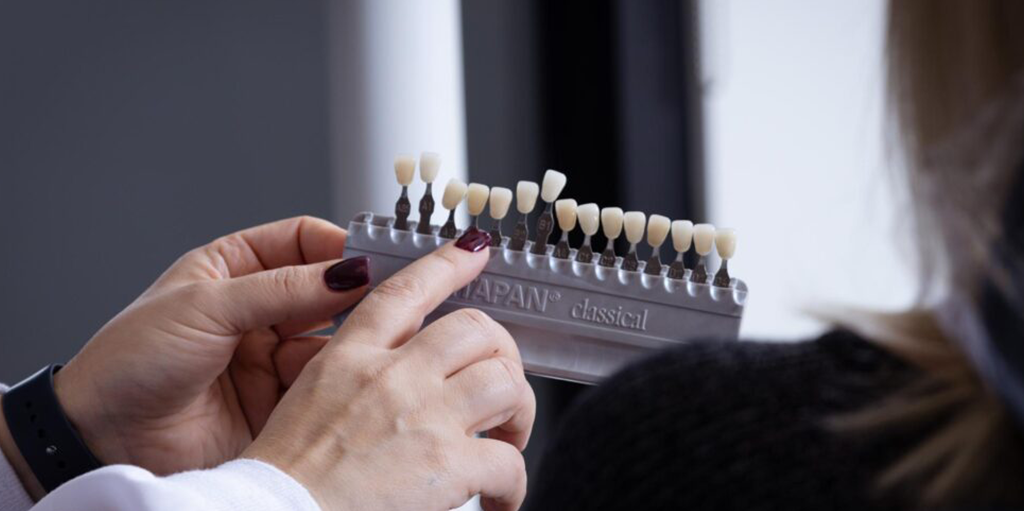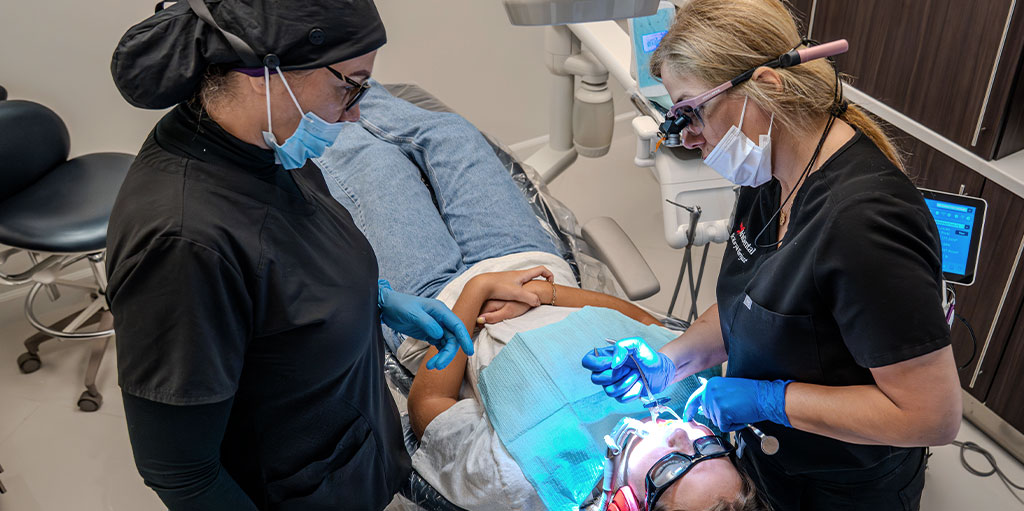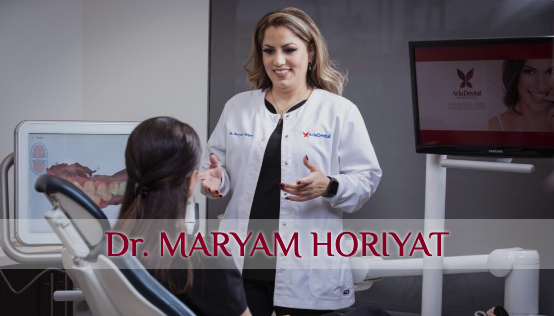Dental care begins at a young age and continues forever. You probably know that the result of poor or improper dental care is tooth decay and cavities. The cavity between two teeth, called an interproximal cavity, is created, like any other cavity, by the activity of bacteria on the surface of the tooth. Join us in this article to find out what a cavity between teeth is. What are its symptoms? How is it treated? and how can we prevent it?
What Is A Cavity?
Let’s start with a simple definition of a tooth cavity. Tooth decay, also known as dental caries, occurs when the enamel of the tooth is destroyed. Enamel is the hard protective outer layer of the tooth. Millions of bacteria live in our mouths. These bacteria adhere to the surface of the teeth and form a sticky film known as plaque. When we eat sugary foods, these bacteria feed on the sugar present, which in turn produces acid that destroys the tooth enamel. This destruction can eventually cause a cavity between teeth. If the cavity is not treated, it will grow larger and reach the dentin (the inner layer of the tooth). This can cause pain, infection, and tooth loss.
What Are Types of Cavities?
Cavities (tooth decay) come in many different types, depending on their location and cause. Here are the main types of cavities, along with their characteristics:
Smooth Surface Cavities
This type of decay occurs on the smooth surfaces between teeth or on the sides of teeth, damaging the enamel. Smooth surface cavities are common in people in their 20s and can be prevented by good dental care and flossing.
Pit And Fissure Cavities
This decay occurs on the chewing surfaces of the molars and premolars (back teeth). Pit and fissure decay is caused by bacteria and food particles getting trapped in the deep grooves (pits and fissures) of the teeth. This decay usually starts during the teenage years and progresses so fast.
Interproximal Cavities (Between Teeth)
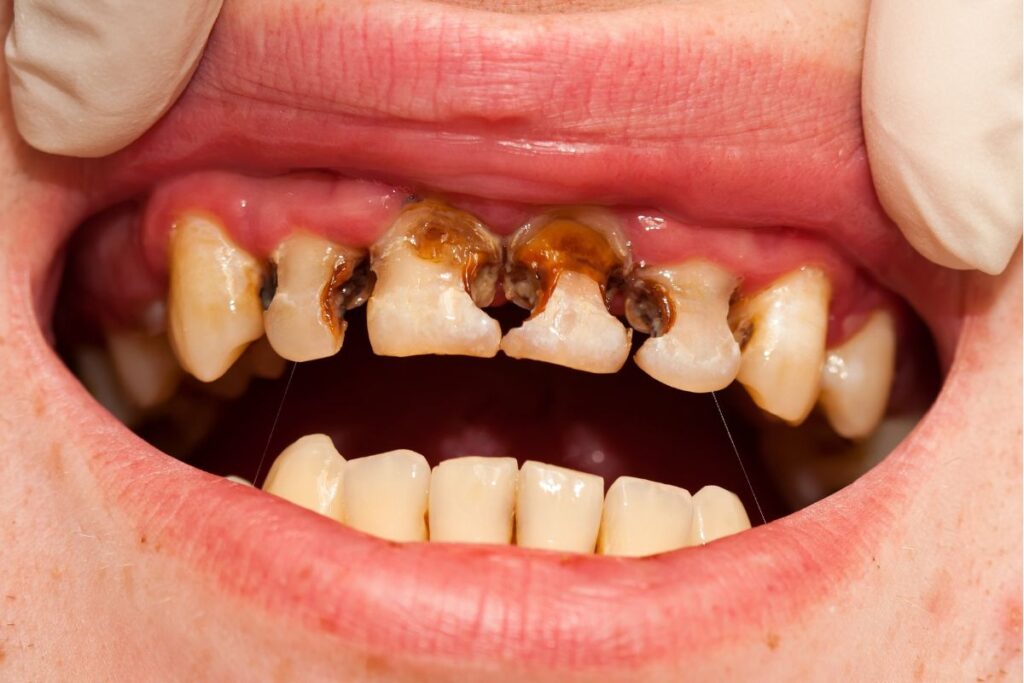
Cavity between teeth, as the name suggests, develop on the surfaces where two adjacent teeth meet, often referred to as contact points. These areas are usually not cleaned very well with a toothbrush and flossing is essential to clean them. As a result, not flossing or having teeth that are too close together can be a factor in causing this decay.
Root decay
This type of decay is more common in middle-aged people because, over time, as the gums recede and age, part of the tooth root becomes exposed to plaque. Root decay is more difficult to treat.
What Are Symptoms of a Cavity Between Teeth?
In their initial stages, tooth decay and cavities between teeth are often present without noticeable symptoms. However, as the decay progresses beyond the enamel and reaches the underlying layer of tissue called dentin, symptoms become apparent. The wider and deeper the cavity between teeth, the more severe the symptoms will be.
If you have the following symptoms, be sure to see a dentist for consultation and treatment:
- Pain when biting
- Sudden mild or severe pain when eating or drinking hot, cold, or sweet things
- Bad smell or taste in the mouth
- Black, brown, or white spots on the surface of the tooth
- A visible cavity or pit in the tooth
- Bleeding or inflamed gums
- Tooth sensitivity
If you suspect you have cavities or tooth decay, see your dentist as soon as possible. It is much easier to treat a cavity in the early stages.
Who Is Most At Risk for Dental Cavities?
Cavity between teeth can happen to anyone, but some people are at higher risk. Factors that increase your risk include:
- Back teeth with deep grooves
- Frequent consumption of sugary or sticky foods
- Frequent snacking or sugary drinks
- Poor oral hygiene
- Dry mouth
- Presence of old fillings
- Use of orthodontic appliances
- Heartburn and acid reflux
- Eating disorders such as bulimia or anorexia nervosa
Other factors, such as smoking or calcium deficiency, can also play a role in the development of cavity between teeth. An annual dental checkup by a dental professional can greatly help with earlier diagnosis and better treatment.
How Are Cavities (Tooth Decay) Diagnosed?
Since the symptoms of cavity between teeth may not be obvious in the early stages of tooth decay, it is best to visit your dentist twice a year for a checkup. Cavities are diagnosed through a combination of visual examination, tools, and imaging techniques.
During the initial examination, the dentist will check for discoloration of the teeth, small cavities, or softening of the tooth surface. Interdental cavities or cavities under previous fillings can also be detected with Dental X-Rays (Bitewing or Periapical). Early detection prevents excruciating toothaches and allows the dentist to treat the problem with less invasive treatments.
How to Treat a Cavity Between Teeth?
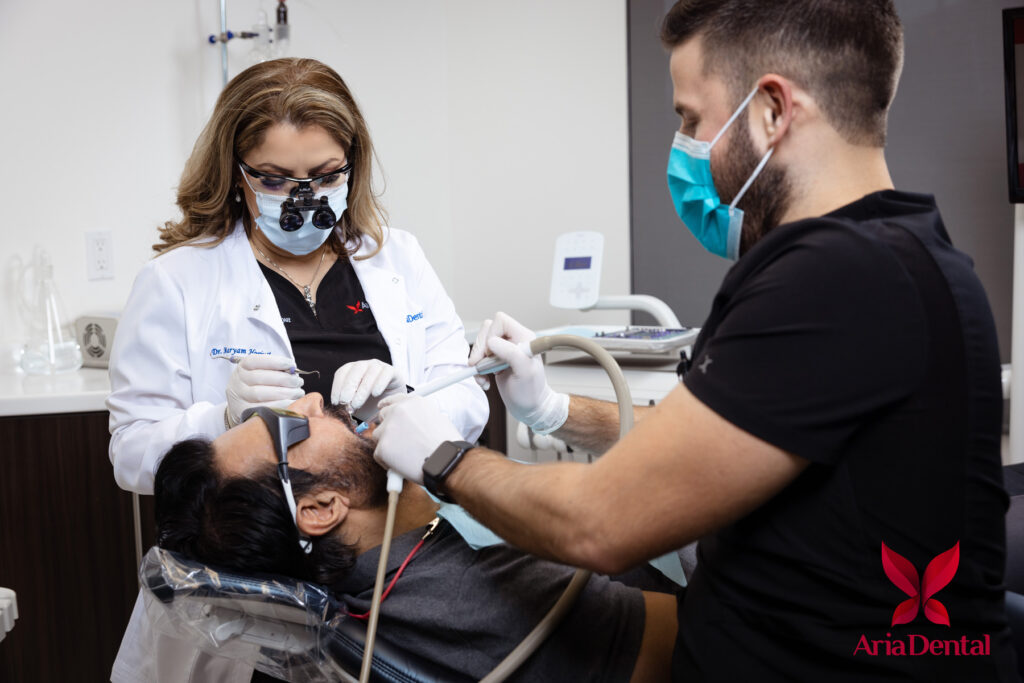
After identifying a decayed tooth, if the decay is superficial, the decayed part of the tooth must be removed and the tooth filled with special materials. If the decay is deep, a dental crown must be placed, and if the decay has reached the pulp of the tooth, root canal treatment or implant must be performed. Sometimes, the decay is very severe and none of the above treatments can be performed, in which case the tooth must be extracted. We will explain more about each of these treatment methods below.
Remineralization
When we eat, we naturally lose some minerals into our teeth. This can cause cavity between teeth to begin. Remineralization is a vital natural process that helps strengthen tooth enamel and reverse the early stages of tooth decay. This process occurs when essential minerals such as calcium and phosphate are re-deposited into the tooth enamel, effectively repairing weakened areas. Note that remineralization occurs primarily through the interaction of these minerals with fluoride, a natural element. This is done under therapy in a dental clinic.
Dental filling
Dental filling is an effective treatment for cavity between teeth. The dentist will first use a local anesthetic to numb the area around the decayed tooth. Next, the dentist will use a drill or laser to remove the decayed area. The dentist will then examine the area to make sure all the decay has been removed. Once the decay is gone, the dentist will clean the cavity of bacteria and debris to prepare the space for the filling.
There are different types of filling materials that your dentist will choose for dental filling based on the location of the decay, the size of the cavity, and your specific situation. Tooth-colored and non-tooth-colored fillings are your options. Composite, ceramic, and glass ionomer are some of the materials used in tooth-colored fillings.
Crown
A dental crown is a type of fixed prosthesis that is placed over a damaged or weak tooth and is shaped like a crown. This crown acts as a protective cap, covering the entire visible part of the tooth and restoring its shape, size, strength, and appearance. A dental crown is used for broken, cracked, decayed, or extracted teeth. A dental crown can be made of metal, all-ceramic, metal-ceramic, zirconium, or composite. A dental crown can last for years and, with proper care, may last up to 10 to 15 years.
Extracion And Implant
If the cavity between teeth is severe, and the tooth is so damaged by decay that it cannot be restored, tooth extraction and implants may be a treatment option. Sometimes, tooth decay has progressed to an extent that the tooth cannot be restored and must be removed.
A period of healing and regeneration for the jawbone and gums is essential before an implant can be placed. Typically, the optimal time for implant placement is between two and six months following tooth extraction. In specific, carefully evaluated cases, immediate implant placement after tooth extraction may be possible; however, this procedure requires a thorough assessment by a qualified dentist.
How to Prevent a Cavity Between Teeth?
We all know that maintaining good oral hygiene can help prevent cavity between teeth. Brushing your teeth at least twice daily is fundamental for dental health. However, a toothbrush alone cannot effectively remove bacteria and plaque from the tight spaces between teeth. This is where daily flossing becomes crucial; it helps to clean these interdental gaps and crevices, significantly reducing the risk of decay in these areas.
Beyond brushing and flossing, a healthy diet plays a vital role in oral hygiene. Eating less sugary and acidic foods or beverages can significantly improve your dental health. It is also advisable to brush your teeth after eating sugary or sticky foods. Furthermore, minimizing smoking and alcohol consumption can lower your risk of developing cavity between teeth. Finally, regular dental check-ups every six months are essential. These visits allow your dentist to detect and address any small cavities early, leading to quicker and simpler treatment.
Meet Your Dentist To Get Rid Of Cavities
Most people experience cavity between teeth at least once in their lifetime. So if you think you might have one, don’t worry. At Aria Dental in Orange County, CA, we offer holistic and integrated dental services. Just contact us and get the best treatment options from our experts.




